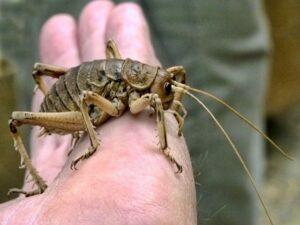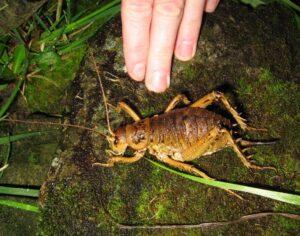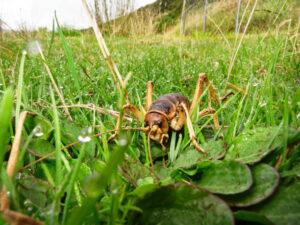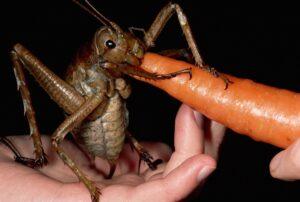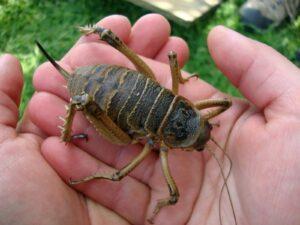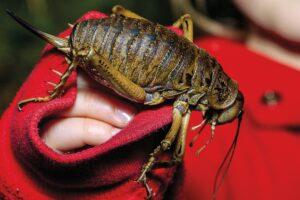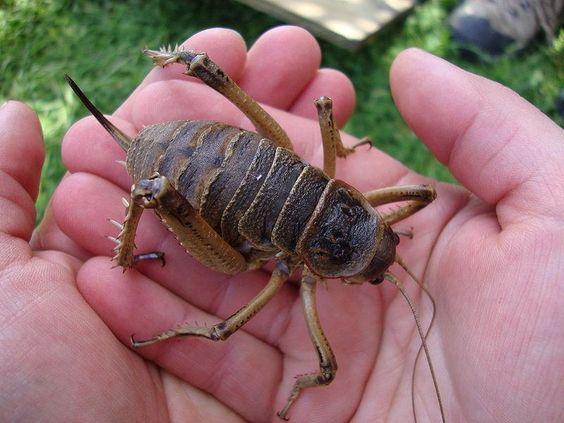Giant Wētā (Deinacrida)
Updated on
17/11/2022Giant wētā or Deinacrida is a genus in the wētā (Anostostomatidae) family, consisting of 11 insect species, all native to New Zealand. Wētās are generally large, cricket-like insects and the species belonging to the giant wētā genus are distinctly larger than others in the family. They are found to be less social as well.
Their genus name Deinacrida has been derived from the Greek words for ‘terrible cricket’, referring to their size. Ten out of the eleven species are considered at risk of extinction and are protected by law in New Zealand.
Scientific Classification
- Class:Insecta
- Order:Orthoptera
- Suborder:Ensifera
- Family:Anostostomatidae
- Subfamily:Deinacridinae
- Genus:Deinacrida
Conservation Status
Species
- Herekopare wētā (D. carinata)
- Scree wētā (D. connectens)
- Bluff wētā (D. elegans)
- Poor Knights giant wētā (D. fallai)
- Little Barrier Island giant wētā or wētāpunga (D. heteracantha)
- Mahoenui giant wētā (D. mahoenui)
- Kaikoura giant wētā (D. parva)
- Mt Cook giant wētā (D. pluvialis)
- Cook Strait giant wētā (D. rugosa)
- Giant mole wētā (D. talpa)
- Mt Arthur giant wētā (D. tibiospina)
What Do They Look Like
They can grow up to 4 inches (10cm) in size without counting the antennae and legs. Weighing around 1.2-1.4 oz (35-40 gms), these giant insects can be larger and heavier even than some small rodents. The Little Barrier Island giant wētā is the largest among all the giant wētās.
One female, carrying eggs, weighed 4.47 oz (70gm), which is even heavier than a sparrow, making it one of the largest and heaviest insects ever recorded.
The color varies between species, but they are mostly different shades of brown.
Distribution: On offshore islands in New Zealand; the mainland populations have been wiped out by introduced rodents, mostly rats.
Habitat: Grasslands, forests, shrublands, and caves where they dig holes in trees, logs, or live under stones
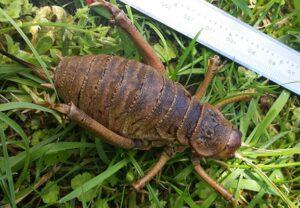
Do They Bite/Sting: Yes; with powerful mandibles, they are capable of inflicting painful bites
Lifespan: 6-9 months after reaching adulthood
Predators: Rodents like rats, hedgehogs, and various mustelids, as well as cats, birds, and lizards
Behavior and Characteristics
Diet and Feeding
They mainly feed on plant seeds, fruits, flowers, and leaves, with a preference for native plants having large leaves, like karamu, māmāngi, and karaka. They are also known to love carrots.
Life Cycle
1. Egg Stage
Upon reaching adulthood, the females mate and lay eggs through the rest of their lives, laying around 100-300 eggs in total. The eggs are laid on the soft forest floor, and they hatch into ‘instars’ – the next developmental stage in their life.
2. Nymph Stage
They go through multiple instar stages and molting to reach their adult size and weight. It can take up to 2 years for them to reach adulthood from the egg stage.
FAQs
Being a protected species found only in New Zealand, they are not commonly kept as pets.
Source
i.pinimg.com, content.eol.org, science.org, mentalfloss.com, visitzealandia.com, britannica.com




